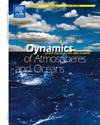利用雷达资料综合分析热带气旋登陆动力学的复杂性
IF 1.9
4区 地球科学
Q2 GEOCHEMISTRY & GEOPHYSICS
引用次数: 0
摘要
印度次大陆上空的热带气旋(TCs)经常造成毁灭性的影响,特别是在登陆时。本研究专门研究了热带气旋在登陆前(PrL)、登陆中(DL)和登陆后(PoL)阶段的动态变化。使用天气研究与预报模型模拟了三个着陆的TCs-Hudhud (2014), Titli(2018)和Fani(2019),通过两组实验:CNTL(无Rf同化)和Rf_DA(有Rf同化)结合多普勒天气雷达反射率(Rf)数据。Rf_DA对TC轨道的影响最小;然而,在最小中心压力方面,它显著提高了强度(MCP, 43 % &;8 %减少误差)和最大持续地面风(MSSW, 53 % &;在登陆过程中,Hudhud和Fani分别为15 %减少误差)。弱相被准确地捕获,弱相的结构变化与Rf_DA的观测结果密切一致。与CNTL相比,Rf_DA能更好地再现DL和PoL期间的实际降雨分布和相关热力学过程。水分收支分析表明,低层水汽辐合(1000 ~ 700hpa)和高层平流(400 ~ 100hpa)是影响tc DL和PoL降水特征的主导因子。此外,tc相关降雨在DL和PoL阶段受到中高层(600-200hPa)冻结水成物和低层(1000-700hPa)液态水成物的强烈影响。总之,纳入Rf数据大大改善了tc的关键特征——登陆阶段的结构、强度和降雨模式。这些发现对改善热带气旋登陆的早期预警系统具有重要意义,特别是在人口密度高的沿海地区。本文章由计算机程序翻译,如有差异,请以英文原文为准。
Analyzing the complexity of tropical cyclone landfall dynamics through the integration of radar data
Tropical cyclones (TCs) over the Indian subcontinent often led to devastating impacts, especially during landfall. This study exclusively investigates the dynamical changes of the TCs during their landfall phases, covering pre-landfall (PrL), during-landfall (DL), and post-landfall (PoL) periods. Three landfalling TCs—Hudhud (2014), Titli (2018), and Fani (2019)—are simulated using the Weather Research and Forecasting model, incorporating Doppler Weather Radar reflectivity (Rf) data through two sets of experiments: CNTL (without Rf assimilation) and Rf_DA (with Rf assimilation). Rf_DA has minimal impact on the TC track; however, it significantly improves the intensity in terms of minimum central pressure (MCP, 43 % & 8 % reduced error) and maximum sustained surface wind (MSSW, 53 % & 15 % reduced error) for Hudhud and Fani, respectively, during the landfall process. The weakening phase is accurately captured, and structural changes in the DL phase are closely aligned with observations for Rf_DA. Realistic rainfall distribution and associated thermodynamic processes during DL and PoL are better replicated in Rf_DA compared to CNTL. The water budget analysis shows that lower-level moisture convergence (1000–700hPa) and upper-level (400–100hPa) advection are the dominant factors regulating DL and PoL rainfall characteristics of TCs. Furthermore, TC-associated rainfall is strongly influenced by frozen hydrometeors at the mid to upper-level (600–200hPa) and liquid hydrometeors at the lower-level (1000–700hPa) in the DL and PoL phases. In summary, incorporating Rf data considerably improved the key features of TCs—the structure, intensity, and rainfall patterns during the landfall phase. These findings have significant implications for improving early warning systems for TC landfall, especially in coastal areas with high population densities.
求助全文
通过发布文献求助,成功后即可免费获取论文全文。
去求助
来源期刊

Dynamics of Atmospheres and Oceans
地学-地球化学与地球物理
CiteScore
3.10
自引率
5.90%
发文量
43
审稿时长
>12 weeks
期刊介绍:
Dynamics of Atmospheres and Oceans is an international journal for research related to the dynamical and physical processes governing atmospheres, oceans and climate.
Authors are invited to submit articles, short contributions or scholarly reviews in the following areas:
•Dynamic meteorology
•Physical oceanography
•Geophysical fluid dynamics
•Climate variability and climate change
•Atmosphere-ocean-biosphere-cryosphere interactions
•Prediction and predictability
•Scale interactions
Papers of theoretical, computational, experimental and observational investigations are invited, particularly those that explore the fundamental nature - or bring together the interdisciplinary and multidisciplinary aspects - of dynamical and physical processes at all scales. Papers that explore air-sea interactions and the coupling between atmospheres, oceans, and other components of the climate system are particularly welcome.
 求助内容:
求助内容: 应助结果提醒方式:
应助结果提醒方式:


